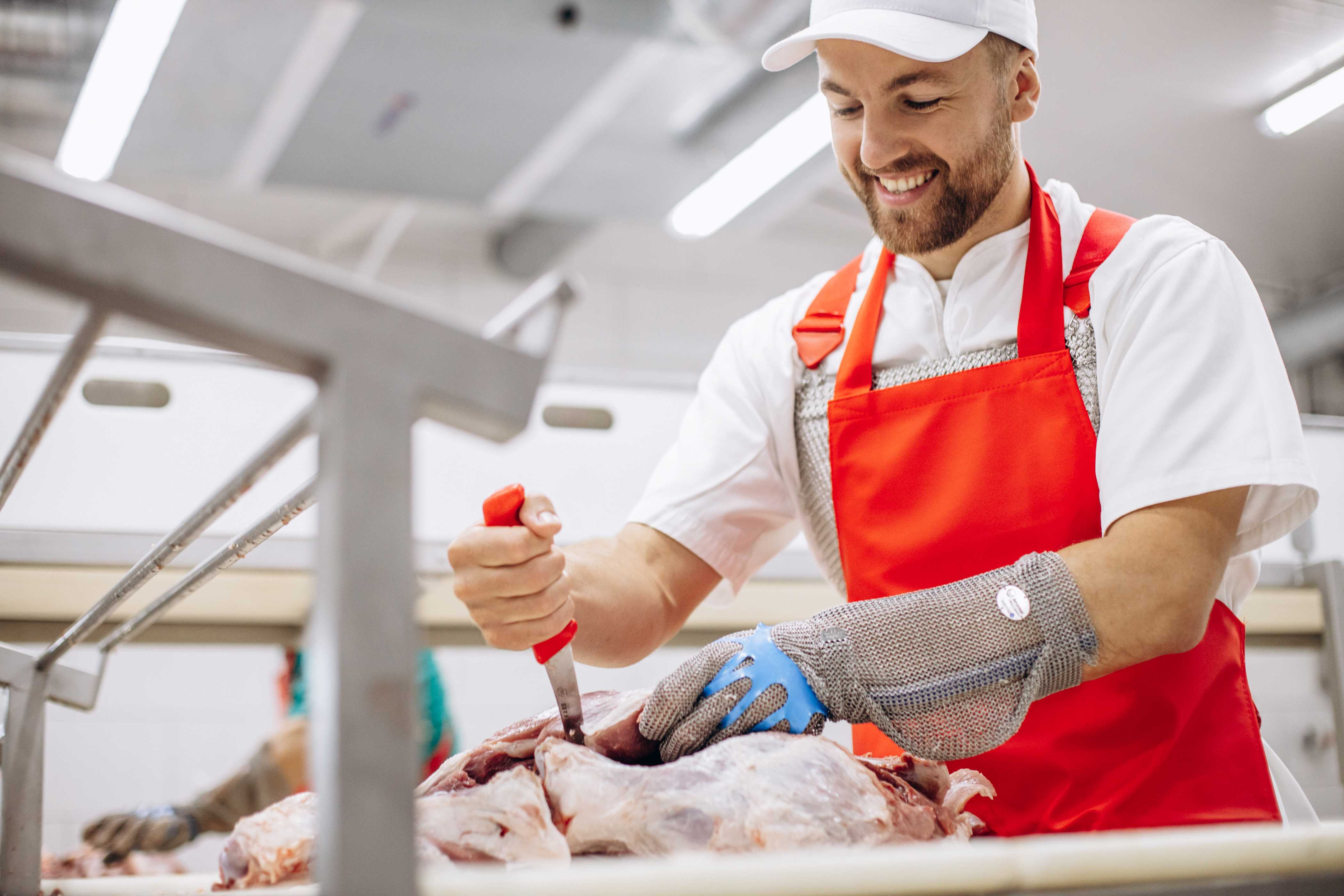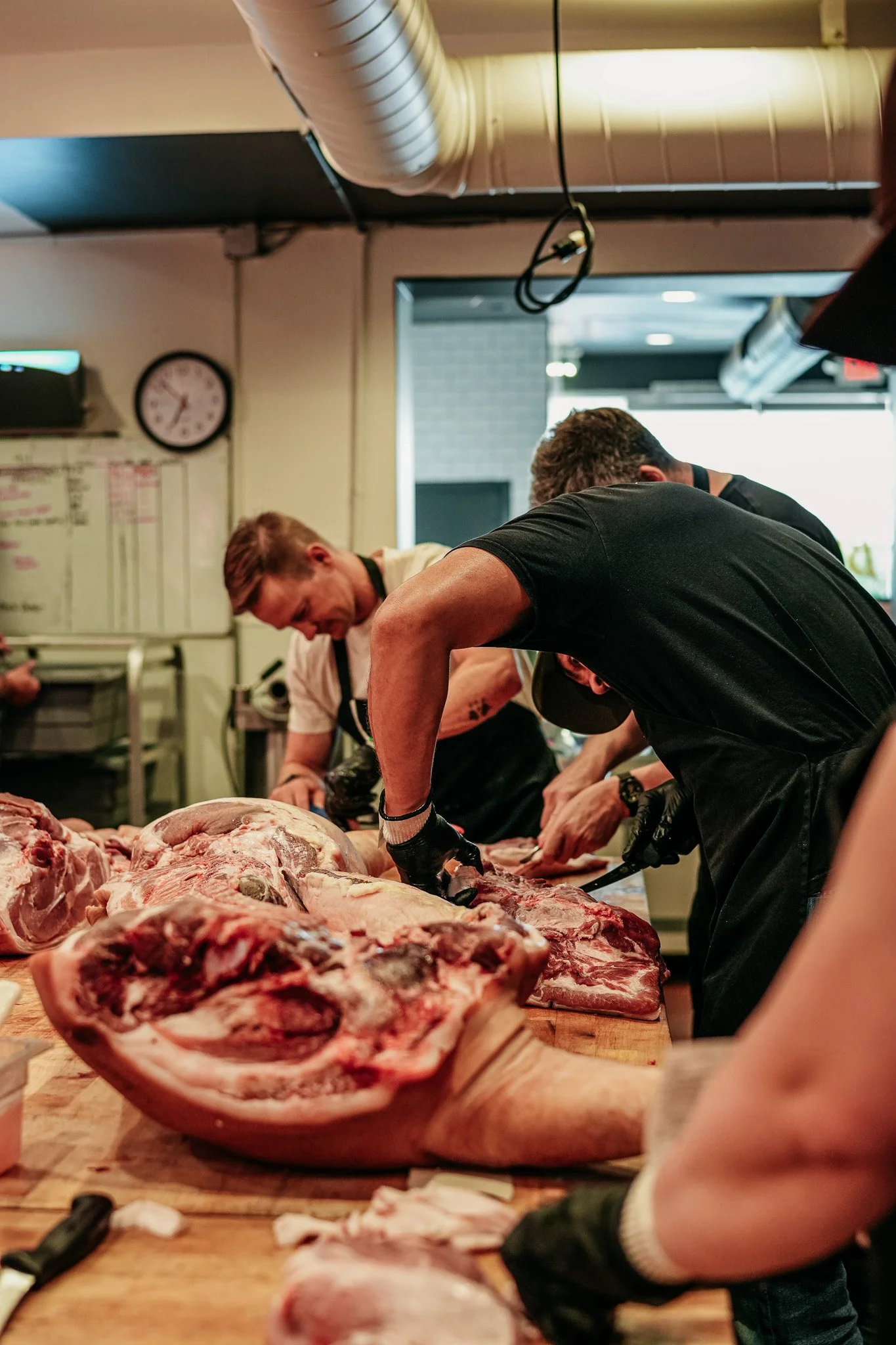Everything About Meat Markets: Understanding Their Role in Supporting Regional Farmers
Meat markets serve a critical function in local economic situations by linking the gap between customers and farmers. They provide a direct sales channel that enhances the freshness and quality of meat products. Past comfort, these markets play a significant duty in advertising lasting agriculture and sustaining the source of incomes of local farmers. Nonetheless, the effects of this connection prolong further than one could anticipate, elevating inquiries concerning sourcing techniques and customer selections.
The Significance of Meat Markets in Local Economic Climates
Although typically forgotten, meat markets play a necessary function in bolstering regional economic climates by supporting farmers and generating tasks. These facilities work as vital middlemans, providing a platform for local manufacturers to sell their products directly to customers. By acquiring in your area sourced meat, consumers add to the sustainability of nearby farms, guaranteeing their feasibility and promoting farming diversity.
Meat markets produce employment possibilities, ranging from sales and butchers team to administration and logistics roles. This task production stimulates the regional economic climate, cultivating a feeling of neighborhood as homeowners involve with their community organizations.
On top of that, meat markets frequently bring in clients who seek top notch, fresh products, which can result in raised foot web traffic and sales for surrounding services. On the whole, the presence of meat markets can considerably enhance local economic health, strengthening connections between farming and community well-being while sustaining the resources of farmers.

Connecting Farmers and Consumers: Just how Meat Markets Run
Meat markets work as vital hubs that attach neighborhood farmers straight with consumers, helping with a streamlined supply chain that benefits both parties. By sourcing items from neighboring ranches, these markets ensure that consumers receive fresh, top notch meat while sustaining local agriculture. The procedure of meat markets involves developing connections with farmers, commonly allowing them to showcase their items and share their farming techniques.
Subsequently, customers get access to a varied option of meats that show local flavors and choices. Transparency is a key aspect of these markets, as consumers are commonly provided with details regarding the sourcing and taking care of of the meat. This direct connection cultivates trust and commitment in between farmers and consumers, boosting area connections. Additionally, meat markets regularly take part in advertising activities, such as farm-to-table events, which further improve the customer's experience and recognition of neighborhood farming techniques.
Promoting Lasting Farming Practices
Promoting lasting farming practices is crucial for the future of food production and environmental wellness. By concentrating on ethical farming techniques, motivating biodiversity, and promoting for local and seasonal sourcing, the agricultural market can considerably lower its ecological impact. These methods not only sustain the community yet likewise cultivate a much healthier connection between consumers and farmers.

Moral Farming Methods
An expanding number of farmers are embracing ethical farming methods to improve sustainability and minimize environmental impact. These techniques concentrate on liable land management, reducing making use of chemical fertilizers and chemicals, and accepting organic methods. Strategies such as crop turning, cover cropping, and agroforestry not only improve soil health and wellness but likewise promote biodiversity. In addition, farmers are significantly focusing on animal well-being by giving pasture-based systems and minimizing arrest methods. By prioritizing local resources and community involvement, ethical farming promotes a resistant farming system. This change not only profits the environment yet additionally enhances the connection in between farmers and customers, encouraging educated acquiring decisions that support lasting techniques. Inevitably, these strategies offer to develop an extra lasting future for agriculture.

Biodiversity and Environment Health And Wellness
While many farming techniques have historically prioritized yield over environmental balance, an expanding recognition of biodiversity's relevance has actually emerged amongst consumers and farmers alike. Biodiversity enhances ecosystem resilience, sustaining dirt health and wellness, bug control, and pollination. By incorporating diverse plants and animals, farmers can develop more stable ecological communities that decrease dependence on chemical inputs and boost general productivity. Lasting farming techniques that promote biodiversity not only protect natural habitats but also add to the long-lasting feasibility of farming. Meat markets play a necessary function in this paradigm shift by supporting for local products that focus on environmental wellness. By picking to source from ranches that accept biodiversity, customers can support practices that guarantee a lasting future for agriculture and the environment.
Seasonal and Neighborhood Sourcing
Seasonal and neighborhood sourcing not just boosts the quality of food yet additionally sustains lasting agriculture practices that benefit both customers and farmers. By prioritizing local meat markets, customers can attach directly with farmers, cultivating a sense of neighborhood and trust. This version reduces the carbon footprint connected with long-distance transport, advertising environmental sustainability. Farmers gain from even more steady earnings and a reliable market for their items, which motivates liable farming practices. Furthermore, seasonal sourcing motivates varied farming techniques, enabling farmers to rotate plants and livestock, thereby keeping soil health and biodiversity. In general, this method produces a more durable food system that lines up with the worths of top quality, neighborhood, and sustainability assistance, enhancing the essential link in between consumers and local agricultural systems.
The Role of Transparency in Sourcing Meat
What variables add to customer trust fund in meat items? Transparency in sourcing is an important component. Customers progressively seek information concerning where their meat originates from, including the farms and practices associated with elevating the pets. Meat markets that prioritize openness commonly show clear labeling, outlining the source and manufacturing techniques made use of. This visibility cultivates confidence and enables customers to make enlightened selections.
In addition, clear techniques can consist of ranch sees, collaborations with neighborhood farmers, and sharing stories about the pets and their environments. As customers end up being extra informed concerning food sourcing, they often tend to like meat items from providers that are forthcoming with details. This need for openness not just enhances customer depend on yet also motivates meat markets to establish moral partnerships with local farmers. Eventually, transparency sustains a cycle of responsibility, benefiting both customers and producers in the meat sector.
Supporting Pet Welfare Via Resident Sourcing
Supporting animal well-being through local sourcing rest on the adoption of moral farming techniques. By prioritizing openness in sourcing, consumers can make educated selections that show their worths. Additionally, area engagement campaigns foster a stronger connection between farmers and customers, enhancing the general commitment to gentle treatment of animals.
Ethical Farming Practices
While customers progressively prioritize moral factors to consider in their food choices, regional sourcing provides a practical path to supporting pet welfare. Honest farming methods stress humane treatment of pets, guaranteeing they have adequate area, appropriate nutrition, and accessibility to exterior settings. Regional farms frequently comply with these requirements, as they are more liable to their neighborhoods and customers. By picking to resource meat locally, consumers can sustain farms that focus on humane and lasting methods over industrialized approaches, which frequently compromise animal health. This link fosters a much deeper understanding of food production and encourages accountable intake. Eventually, regional sourcing empowers customers to make informed choices that align with their values relating to ethical treatment of animals in the food sector.
Transparency in Sourcing
How can openness in sourcing improve consumer depend on in neighborhood meat markets? By supplying clear info about the origins of their products, regional meat markets promote a sense of responsibility and honesty. When customers understand the sourcing techniques, including the therapy of animals and farming approaches, they are more probable to really feel positive in their buying choices. This openness allows browse this site customers to align their values with business they sustain, recognizing they are adding to moral animal welfare and lasting techniques. In enhancement, neighborhood meat markets can showcase partnerships with nearby ranches, stressing community support and strengthening a positive partnership between manufacturers and customers. Ultimately, transparency in sourcing not just constructs trust however additionally motivates informed selections amongst customers.
Neighborhood Interaction Efforts
What function do neighborhood interaction initiatives play in advertising pet welfare through neighborhood sourcing? These initiatives substantially improve awareness and understanding of honest farming practices among customers. By promoting connections between local farmers and community members, meat markets can highlight the relevance of humane therapy of pets. Educational workshops and ranch trips enable customers to high quality meat delivery witness firsthand the conditions under which pets are raised, enhancing the worth of neighborhood sourcing. In addition, area events, such as farm-to-table dinners, highlight the relationship between animal well-being and lasting practices. With these involvements, customers establish trust in local meat markets, motivating them to support moral cultivating a society and sourcing of accountable usage that prioritizes pet welfare in the community.
Wellness Advantages of Picking Local Meat Products
Selecting neighborhood meat products uses many health benefits that can significantly enhance general well-being (meat markets edwardsville il). One considerable advantage is the reduced time in between farm and table, which typically results in fresher meat with greater dietary worth. Local meats often tend to be cost-free from damaging preservatives and additives generally located in factory-farmed choices, contributing to a cleaner diet
In addition, regional farmers commonly prioritize humane and sustainable techniques, causing healthier pets that generate better-quality meat. Grass-fed and pasture-raised pets, frequently found in local markets, usually have higher levels of omega-3 fatty acids and lower degrees of saturated fats contrasted to their barnyard equivalents.
Furthermore, sustaining regional meat products cultivates community health and wellness by guaranteeing that customers have accessibility to secure and properly sourced food. By selecting neighborhood, individuals not only nurture themselves yet likewise add to the health of their area and environment.
Making Enlightened Selections at the Meat Market
When traversing a meat market, comprehending the essential factors that affect quality and sourcing can empower consumers to make enlightened selections. Consumers should focus on regional products, which commonly originate from ranches with lasting techniques. Recognizing labels such as "grass-fed" or "organic" can likewise direct decisions, as these often show greater welfare requirements and nutritional benefits.
Involving with the butcher is important; educated team can supply understandings right into the sourcing of their meats and suggest cuts that suit different food preparation approaches. Customers are urged to ask about the ranch's techniques, including pet therapy and feed.
Furthermore, analyzing the meat's shade and structure can disclose freshness and top quality. Lean cuts need to appear intense and wet, while fatty cuts ought to have a marbled look. By integrating these practices, customers can with confidence pick meats that straighten with their worths and support regional farming.
Frequently Asked Inquiries
What Types of Meat Are The Majority Of Generally Marketed at Local Meat Markets?
Regional meat markets normally provide a variety of meats, consisting of beef, pork, lamb, and poultry. These facilities often feature specialty cuts, sausages, and in your area sourced products, providing to diverse culinary preferences and client demands.
Just How Can I Discover a Meat Market Near My Area?
To find a meat market nearby, one can utilize on-line click over here maps, online search engine, or neighborhood directories - meat market delivery. Furthermore, asking next-door neighbors or pals for suggestions often yields beneficial insights into the ideal local options readily available
Are There Seasonal Variations in Meat Availability at Meat Markets?
Seasonal variants in meat availability at meat markets commonly occur, influenced by variables such as neighborhood farming methods, animal reproduction cycles, and seasonal need. This can affect the kinds and amounts of meat supplied throughout the year.
Do Meat Markets Deal Unique Promotions or Discounts for Bulk Purchases?
Meat markets commonly supply unique promotions and discount rates for bulk purchases. This method encourages clients to buy larger quantities while enabling the markets to manage stock properly, benefiting both customers and the business monetarily.
Can I Request Particular Cuts of Meat at the Market?
Yes, clients can frequently request specific cuts of meat at the marketplace. Numerous butchers want to suit unique orders, ensuring that clients receive the exact cuts they prefer, tailored to their preferences.
By sourcing items from close-by ranches, these markets ensure that consumers receive fresh, top notch meat while sustaining local farming. By prioritizing local meat markets, customers can attach directly with farmers, promoting a feeling of neighborhood and count on. Exactly how can openness in sourcing boost customer trust fund in regional meat markets? Local meat markets commonly provide a variety of meats, consisting of beef, pork, hen, and lamb. Seasonal variants in meat accessibility at meat markets usually take place, influenced by aspects such as local farming methods, animal reproduction cycles, and seasonal demand.